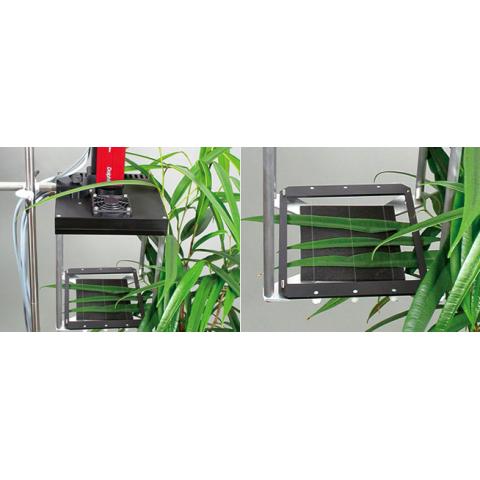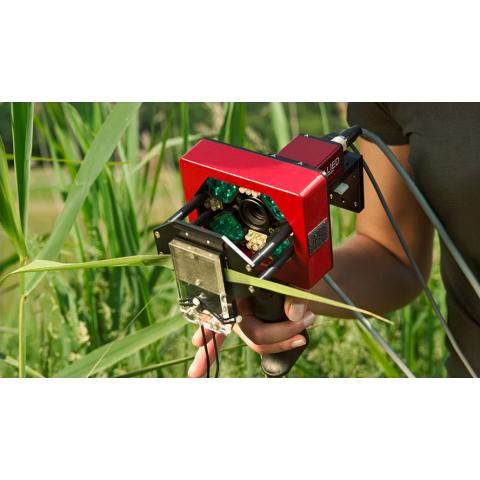IMAGING-PAM M-Series
Chlorophyll Fluorescence System
Features
Walz introduces a family of IMAGING-PAM fluorometers, the so-called M-Series which covers a wide range of applications. Large scale samples with areas exceeding multiwell plate format can be imaged as well as microscopically small samples at the level of single cells or even chloroplasts.
MAXI, MINI and MICROSCOPY versions, that are based on the same Multi Control Unit IMAG-CM and 3 different measuring heads, are available.
The M-Series extends the applications of the former Standard IMAGING-PAM, the first version of which was introduced in 2001 and since then has been used with considerable success in such diverse fields of science as leaf electrophysiology, coral research, phytopathology and marine ecophysiology.
MINI Version: Field measurement with IMAG-MIN and leaf clip IMAG-MIN/BK
Chlorophyll Fluorescence and
PAM Fluorometry
Chlorophyll fluorescence is a very sensitive indicator of photosynthesis. Quantitative information on the quantum yield of photosynthetic energy conversion is obtained by PAM fluorometry and the saturation pulse method (Schreiber U (2004) Pulse-Amplitude-Modulation (PAM) Fluorometry and Saturation Pulse Method: An Overview, pp. 279-319. Kluwer Academic Publishers, Dordrecht, The Netherlands).
A wide range of photosynthetic parameters can be derived from fluorescence measurements, giving insight into the physiological state of all photosynthetically active organisms, including higher plants, mosses and ferns as well as various types of algae, phytoplankton and biofilms.
Chlorophyll Fluorescence Imaging
With the advance of highly sensitive CCD cameras and extremely strong light emitting diodes (LED) development of IMAGING-PAM fluorometers has become possible that not only measure images of chlorophyll fluorescence but are also fully competent in providing all relevant chlorophyll fluorescence parameters using the saturation pulse method. In this way, images of photosynthetic activity and its spatio-temporal variations can be obtained.
All IMAGING-PAM fluorometers provide images for 17 different parameters. The fluorescence parameter Ft is continuously monitored. Fo and Fm are assessed after dark adaptation, serving as reference for fluorescence quenching analysis by the saturation pulse method.
Besides Fv/Fm, the PS II quantum yield after dark acclimation, also the PS II quantum yield during illumination, Y(II), and the quantum yields of regulated and non-regulated energy dissipation, Y(NPQ), Y(NO) as well as the apparent electron transport rate (ETR and PS) can be imaged.
A routine for measuring a PAR-absorptivity image is provided for the MAXI and the MINI version of the IMAGING-PAM (Abs.-image based on images of NIR and red light remission). From this parameter also the apparent rate of photosynthesis is calculated and does not need to use the commonly known PAR-absorptivity mean value of 0.84 (ETR) for all areas anymore.
The parameter PS/50 is displayed in order to depict the apparent photosynthesis with the help of the false color code that is also used for the other photosynthesis parameters.
| Range |
Area di misura 10 x 13 cm (versione MAXI)
Area di misura 24 x 32 mm (versione MINI)
|
|---|---|
| Input/Output |
USB
|
| Power |
110/220Vac
|
| Warranty |
2 anni
|



